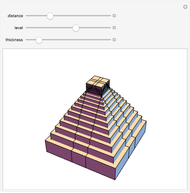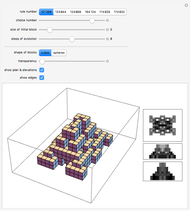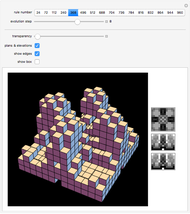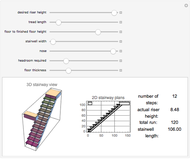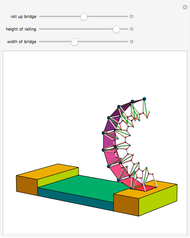Algorithmic Stupa Builder

Requires a Wolfram Notebook System
Interact on desktop, mobile and cloud with the free Wolfram Player or other Wolfram Language products.
A stupa is a moundlike architectural structure closely related to Buddhism. Some stupas contain Buddhist relics. The large Borobudur Temple, in Jogjakarta, Indonesia, has a complex of 73 main stupas. In this Demonstration you can vary an algorithmic stupa based on the stupas in Borobudur.
Contributed by: Hokky Situngkir (September 2010)
Open content licensed under CC BY-NC-SA
Snapshots
Details
Borobudur Temple (760 AD), a world heritage site in Java, Indonesia, is a big stupa with thousands of small-sized stupas inside. This has become the cause of the self-similarity obviously found at the temple. It is a wonder how such a complex megastructure was built when there was no universal metric system known in ancient Javanese culture. The hypothesis that the workers used the ratio head:body:foot = 9:6:4 among parts of the temple was proposed by Atmadi (1988). Thus the ratio explains some aspects related to the three-dimensional form of the Borobudur Temple, as well as the other small stupas there.
For more information, see:
H. Situngkir, "Borobudur Was Built Algorithmically," BFI Working Paper Series WP-8-2010, Bandung Fe Institute, Indonesia.
P. Atmadi, Some Architectural Design Principles of Temples in Java: A Study through the Buildings Projection on the Reliefs of Borobudur Temple, Yogyakarta: Gajah Mada University Press, 1988.
Permanent Citation
"Algorithmic Stupa Builder"
http://demonstrations.wolfram.com/AlgorithmicStupaBuilder/
Wolfram Demonstrations Project
Published: September 28 2010






